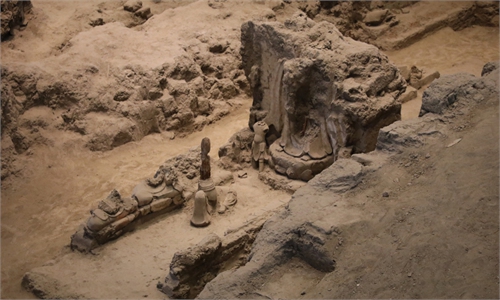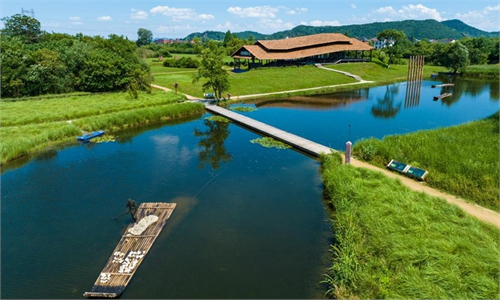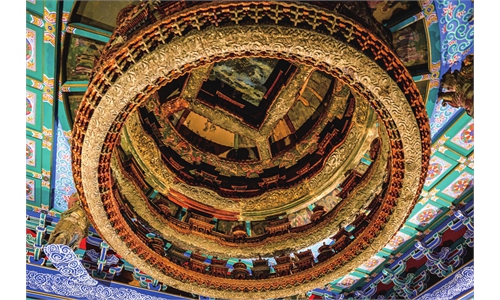ARTS / CULTURE & LEISURE
Han-Wei Luoyang Ancient City Site Museum to open to public
Relics reveal ‘advanced cultural wisdom’

The Han-Wei Luoyang Ancient City Site Museum in Central China's Henan Province Photo: VCG
Located in Luoyang, one of China's most ancient cities in Central China's Henan Province, the Han-Wei Luoyang Ancient City Site Museum is scheduled to open to the public for trial operations on Thursday. The exhibition planning and setup have been "mostly completed," Zhang Mengyu, an administrative staffer at the museum, revealed to the Global Times on Wednesday.
The museum is dedicated to the ancient city as it existed from the Western Zhou Dynasty (1046BC-771BC) to the Tang Dynasty (618-907). The ancient city thrived as the capital during the Han-Wei period. It is China's largest ancient capital site as well as the largest pre-modern urban complex ever discovered in the world.
"Its layout showcases the 'central-axis planning' design that deeply influenced later Chinese capital design. The site also reshaped the urban planning of ancient Chinese capitals," archaeologist He Jierao told the Global Times. He also stressed that the relics unearthed from the site reveal the "advanced cultural wisdom of the ancient Central Plains."
More than 1,300 relics will be displayed at the museum, Guo Rong, director of the museum's Research and Education Department revealed.
A bronze mirror is the stellar highlight of the collection. The Eastern Han (25-220) mirror documents the story of Wang Zhaojun, one of the "Four Beauties" in ancient China known for her marriage alliance to the ancient nomadic Xiongnu tribe.
Besides the mirror, the museum's other stellar items include a painted brick depicting deer motifs and human figures, embodying the Western Han Dynasty (206BC-AD25) people's belief in transcendental journeys to immortal realms. A Buddha head sculpture is another precious relic. It was unearthed from the Yongning Temple within the ancient capital site. The Buddha statue has a gracious smile, revealing the sculpting artistry of the Northern Wei Dynasty (386-534).
Guo told the Global Times that a majority of these relics have never been exhibited before.
"If I were to recommend a hidden treasure to look at, it would be the ancient city wall sample we have on display. Every centimeter added to the wall is a layer of history," Guo noted.
The museum has designed three themed exhibition halls to allocate these more than 1,300 relics. One hall takes zhong, meaning "central or middle" in Chinese, as its theme. The relics in this section reveal how the ancient city was established, whereas the second section, he, meaning "integration" in Chinese, showcase the exchange between northern ethnic minority groups and the Central Plains' ethnic Han people during periods such as the Wei (220-265) and Jin (265-420) dynasties.
With a Byzantine gold coin excavated from a Northern Wei tomb as a highlight, the museum's third exhibition space takes Luoyang itself as a focal point and how China's silk exchanges with the West thrived during ancient times.
"Beyond merely displaying exquisite artifacts, this curatorial path seeks to articulate how China's Central Plains culture embodied inclusiveness and reverence for diversity," curatorial expert Zhang Peng told the Global Times.
To better engage the public, the museum has also installed tech-infused displays. A holographic projection and dynamic topographic installation will show audiences how ancient Luoyang evolved. The museum will also debut Yongning Temple Buddha-inspired ice cream, creating a novel pathway for cultural engagement among young visitors.
"In future, we aim to collaborate with overseas museums to promote the ancient Central Plains civilization," Guo noted, adding that the establishment of the museum deepens China's national-level project to trace the origins of Chinese civilization.



